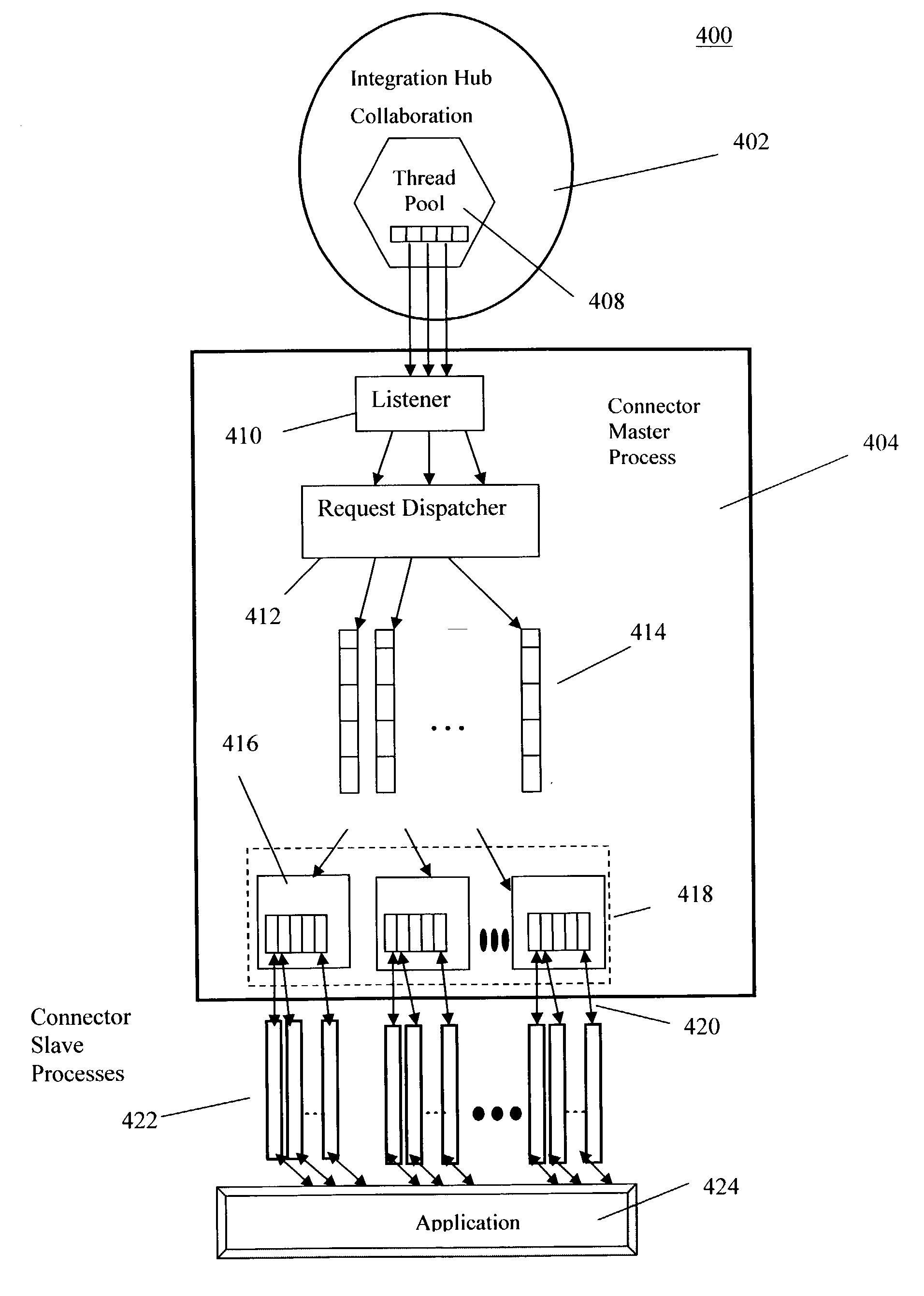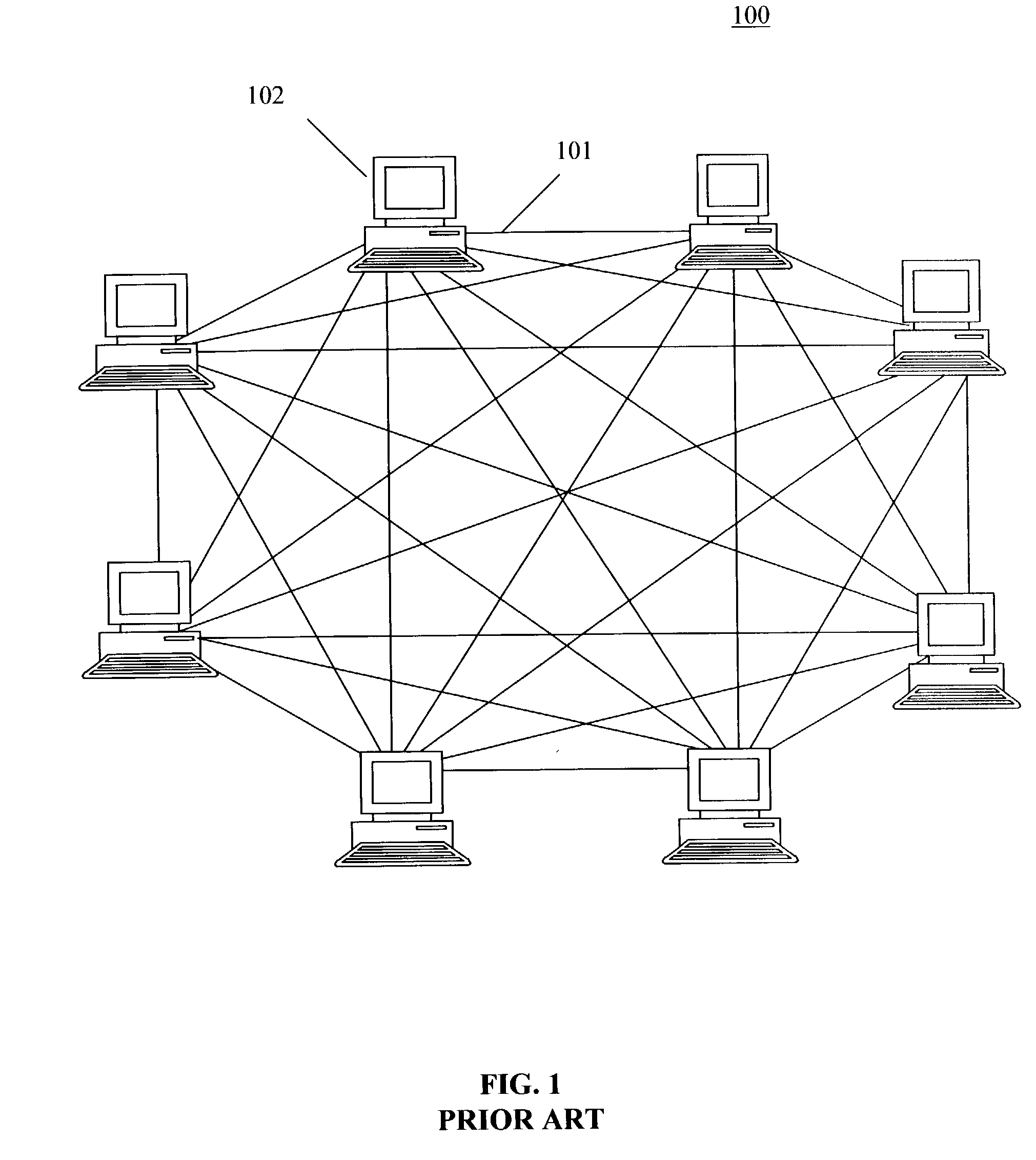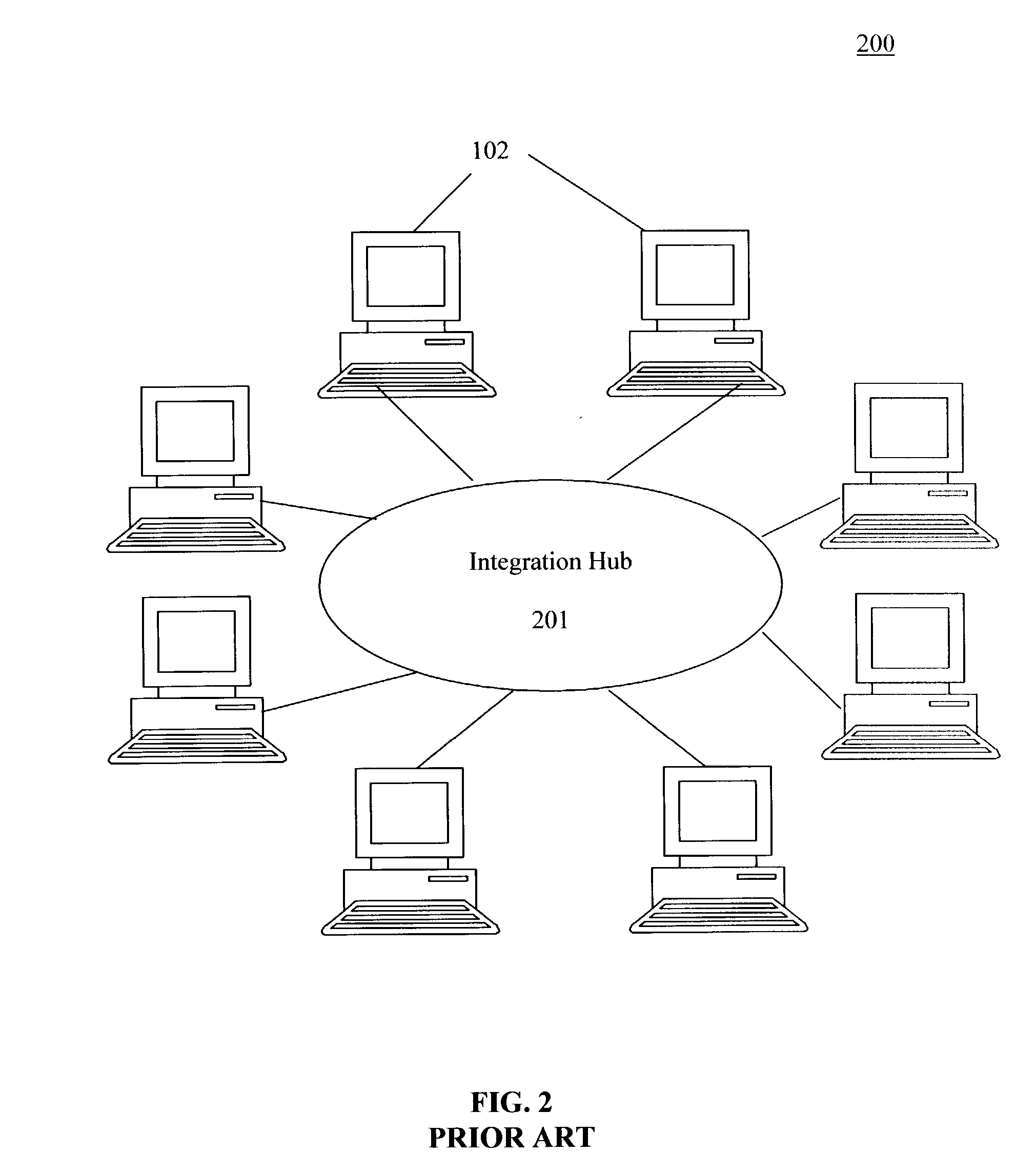Application connector parallelism in enterprise application integration systems
- Summary
- Abstract
- Description
- Claims
- Application Information
AI Technical Summary
Problems solved by technology
Method used
Image
Examples
Embodiment Construction
[0029] In order to solve the scalability limitations discussed above, an application integration system described herein adopts a variant of the concept of server classes used by most Transaction Processing monitors (TP monitors) referred to herein as resource classes. An idea behind the concept of resource classes is to dedicate a pool of application connector processes, each of which has a devoted connection to the underlying application, for a given class of requests. This approach of having dedicated resources to handle different types of requests has the following advantages: 1) it is a tried and tested approach (as used in TP monitors); 2) it is easy to implement and maintain; and 3) it comes close to guaranteeing the prevention of starvation of any given type of request.
[0030] In a typical EAI environment, there are two primary types of requests:
[0031] (i) event-triggered requests that originate from asynchronous events generated by an application, and
[0032] (ii) call-trigger...
PUM
 Login to View More
Login to View More Abstract
Description
Claims
Application Information
 Login to View More
Login to View More - R&D
- Intellectual Property
- Life Sciences
- Materials
- Tech Scout
- Unparalleled Data Quality
- Higher Quality Content
- 60% Fewer Hallucinations
Browse by: Latest US Patents, China's latest patents, Technical Efficacy Thesaurus, Application Domain, Technology Topic, Popular Technical Reports.
© 2025 PatSnap. All rights reserved.Legal|Privacy policy|Modern Slavery Act Transparency Statement|Sitemap|About US| Contact US: help@patsnap.com



